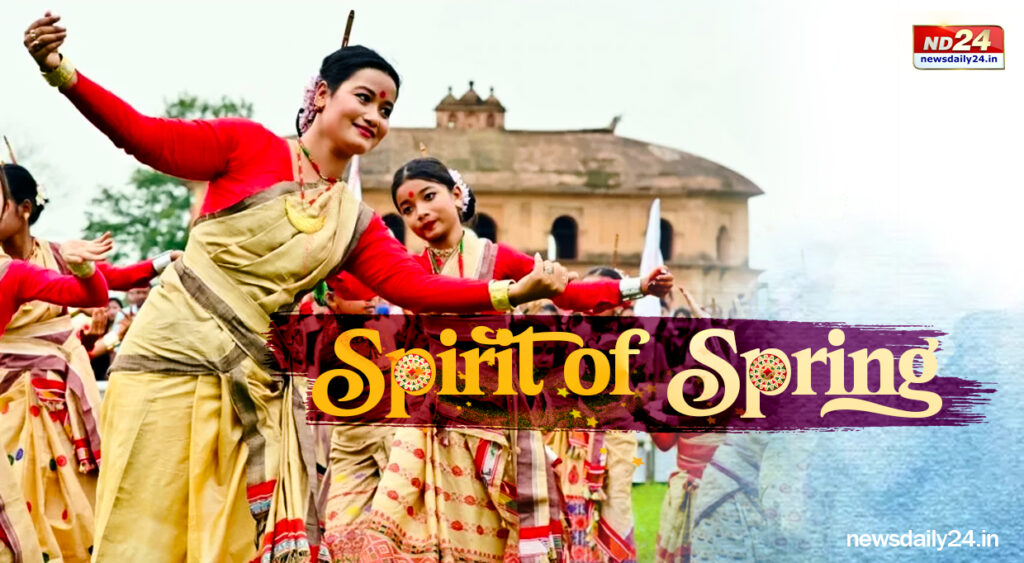Bohag Bihu, also known as Rongali Bihu, marks a season when the sky bursts with vibrant colors, trees bloom, and lush green meadows showcase a spectrum of hues, symbolizing the renewal of life. As the chilly, dry, and dusty air transitions to warmer tones, various states prepare to celebrate their cherished spring festivals, embracing a spirit of camaraderie and enthusiasm.
This festival is celebrated by the native ethnic communities of Assam and signifies the start of the Assamese New Year. Bihu occurs three times a year, with Bohag Bihu being the inaugural celebration. It takes place in the second week of April, heralding the arrival of the seeding season.
History of Bohag Bihu
The festival is intricately linked to Assam’s agricultural heritage and is closely associated with the cycles of harvest. Celebrated mainly as an agricultural event, Bohag Bihu marks the beginning of the Assamese New Year and the much-anticipated arrival of spring, a vital time for farmers.
Significance and traditions
Throughout the celebrations, traditional musical instruments like the dhol, pepa, gogona, toka, and taal fill the air with harmonious melodies, enhancing the vibrant dances performed by young men and women. Bohag Bihu is particularly meaningful in Assam, yet comparable spring harvest festivals are observed throughout India, showcasing the nation’s rich cultural tapestry. For example, it is celebrated as Baisakhi in Punjab, Puthandu in Tamil Nadu, Vishu in Kerala, and Pohela Baisakh in West Bengal. Regardless of regional differences in customs, the core spirit of these festivals, which honor the onset of spring and the richness of the harvest season, brings people together nationwide in celebratory events.
Seven days of Bohag Bihu
On the first day of ‘Goru Bihu’, a special ceremony is held to honor cattle. Livestock are taken to rivers for bathing, adorned with garlands, and their horns and hooves are painted. This ritual is accompanied by sincere prayers for their health and well-being.
The second day, known as ‘Manuh Bihu’, begins with a tradition of applying turmeric paste and taking a cleansing bath in the early morning. As the day unfolds, the homes are filled with the delightful scents of traditional Assamese dishes like Til Laru, Pitha, Murir Laru, Ghila Pitha, and Poka Mithoi, which are shared among family and friends as a sign of goodwill.
The third day, ‘Guxai Bihu’, is focused on honoring household deities, asking for their blessings for prosperity and peace.
On the fourth day, ‘Taator Bihu’ highlights the significance of handlooms and craftsmanship, representing the rich cultural heritage that is integral to Assamese society.
On the fifth day, ‘Nangolor Bihu’ honors the crucial farming tools that are essential for agricultural survival.
The sixth day features ‘GharosiaJibar Bihu’, which expresses appreciation for domestic animals, acknowledging their significant role in rural communities.
The festival reaches its peak with ‘Chera Bihu’, celebrated with great fervor, signifying the end of this lively event, as communities unite in joyful celebration.







